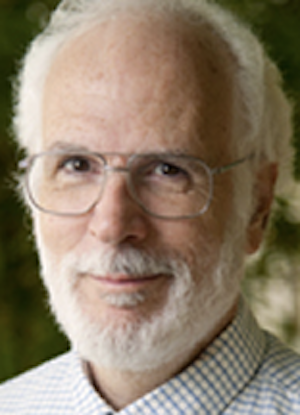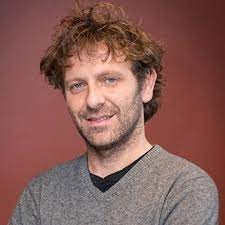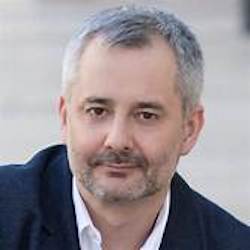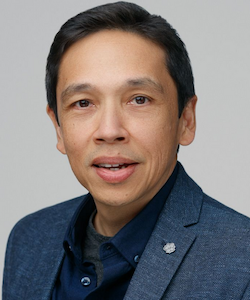2022 Gordon Research Conference: The Latest in Aging Research

At the 2022 Gordon Research Conference, epigenetics was high on the list of aging research topics presented at this secretive enclave of world-renown scientists. See what they had to say about leading edge anti-aging research.
The 2022 Gordon Research Conference is a bit secretive. Unless you’re invited, you only learn about the topics addressed, not the specifics presented. But in a Forbes article, attendee Dr. Alex Zhavoronkov did us the favor of detailing who presented at the conference, and what topics were covered.
Bereft of the particulars, I cherry picked those topics I thought were most interesting and less difficult to understand. I then researched what a few of the scientists have published about them, and here present an overview.
Here's What I Cover from the 2022 Gordon Research Conference
- Day 1: Delaying age; specifically, four anti-aging drugs and conserved genetic components of longevity
- Day 2: Epigenetic programming and rejuvenation; specifically, the work of Stanford University’s Vittorio Sebastiano
- Day 3: Epigenetic biomarkers; specifically, the work of Dr. Ake Lu and Dr. Steven Horvath
- Day 4: Artificial intelligence and machine learning; specifically, Dr. Albert-laszlo Barabasi’s work on “dark matter” food
- Day 5: Comparative genomics of aging; specifically, an interview with Dr. Kenneth Raj about epigenetics and biological age
Day 1: Delaying Age
The GRC kicked-off on the first day with Cynthia Kenyon of UCSF, Richard Miller of the University of Michigan and Inigo Martincorena of the Sanger Institute presenting their latest research and insights.
Drs. Miller and Martincorena presented on drugs and mutations that slow aging in mice, and somatic
mutations and clonal expansions in aging, respectively.
If you’re interested in these topics, you can read a review of Dr. Miller’s work on a drug that slows aging in mice. Miller reports that in laboratory testing, the anti-aging drugs have been shown to lengthen the average healthy lifespan of mice by 15 to 25%.
Four drugs he has studied:
- Rapamycin: Has been highly effective in extending the healthy lifespan of both male and female mice by more than 20%.
- Acarbose: Male mice had a 22% increase in healthy lifespan. Female mice got a 5 to 10% lifespan extension.
- 17-α-estradiol: Lengthens the lifespan of male mice by 15 to 18%; however, it has had no similar effect on female mice.
- Metformin: “There is a bit of evidence that indicates metformin might have an anti-aging effect in people,” Miller says. Metformin is currently undergoing human trials.
I don’t know what topics Drs. Kenyon and Miller presented, although in Kenyon’s case, her early work led to the discovery that an evolutionarily conserved hormone signaling system controls aging in other organisms as well, including mammals. This was huge! It was huge, because it, and similar subsequent work by others, established that various cellular signaling pathways are conserved among a variety of species, including humans, meaning that they share the same biochemical aging process. This means that age-related factors of short-lived species like rodents can be studied, and resulting findings potentially be applied to humans.
A paper published in 2019 concluded that the conserved genetic components of longevity include:
- Insulin
- mTOR
- AMPK
- Adrenergic pathways
Insulin
Insulin and aging In invertebrates, signaling pathways homologous to mammalian insulin and insulin-like growth factor (IGF-1) signal transduction (how cells communicate) have a major role in the control of longevity.
The objective with insulin is insulin sensitivity. Unfortunately, most citizens of the industrialized world have some degree of insulin resistance, which can lead to metabolic syndrome and a shorter healthspan.
Read my post: How To Test Your Insulin Sensitivity and Why It Matters.
mTOR
mTOR is a key modulator of aging and age-related disease. Many gerontologists believe that pharmacological interventions to slow aging are a matter of ‘when’ rather than ‘if’, and a leading target for such interventions is the nutrient response pathway defined by the mechanistic target of rapamycin (mTOR).
Dr. Brad Stanfield of the popular YouTube channel is raising money to fund human research on the drug rapamycin, which you can check out on the right hand side of any of his videos on his channel, Extend Healthspan. Another medical doctor, Dr. Peter Attia, has studied rapamycin extensively, and it will surely be a focal point of his forthcoming book. I will review it once it’s released, so stay tuned for that.
Read: mTOR is a key modulator of ageing and age-related disease.
AMPK
AMP-activated protein kinase (AMPK) controls the aging process via an integrated signaling network. AMPK signaling and aging AMPK is shown to be a central regulator and integrator for several intracellular signaling pathways controlling cellular homeostasis, metabolism, response to stress, oxidative damage proliferation, cell growth, cell death, autophagy, cellular polarity and cellular senescence.
I touched on rapamycin and AMPK in my post, The Geroprotectors: 7 Anti-aging Interventions Backed By Science.
Read: AMP-activated protein kinase (AMPK) controls the aging process
Adrenergic pathways
The adrenergic pathway is responsible for the fight or flight response by releasing adrenalin from the adrenal gland. Aging decreases cardiac beta-adrenergic responsiveness in model systems (animal cohorts) and in humans.
- Dizziness or lightheadedness
- Nausea
- Fainting
- Dehydration and unusual thirst.
- Lack of concentration
- Blurred vision
- Cold, clammy, pale skin
Read: Age-related changes in beta-adrenergic neuroeffector systems in the human heart.
There are other cellular signaling pathways that are evolutionary-conserved throughout all species studied, but the above four are prominent.
Day 2 Epigenetic Reprogramming and Rejuvenation
Read the featured speakers on Day 2 and their topics
Day two was all about “Epigenetic Reprogramming and Rejuvenation.” It was led by Joe Betts-LaCroix of Retro Biosciences. Manuel Serrano of IRB Barcelona started the day with a talk on understanding and manipulating in vivo reprogramming and its effects on aging. He was followed by Vittorio Sebastiano of Stanford University, who spoke about transient reprogramming for multifaceted reversal of aging. Jacob Kimmel of NewLimit Research followed Vittorio with a talk on reprogramming strategies to restore youthful gene expression. Then came Morgan Levine of Yale University, who discussed DNA methylation landscapes in aging and reprogramming. She was followed by Yuancheng Lu of Whitehead Institute and Diljeet Gill of Altos Labs Cambridge Institute, who discussed reprogramming to recover youthful epigenetic information and restore vision, and multi-omics rejuvenation of human cells by maturation phase transient reprogramming, respectively. The second subject matter of the day was “Genomics of Aging” and was led by Emma Teeling as the discussion leader. Nicholas Schork of TGen discussed integrated approaches to characterizing the polygenic basis of longevity. Edward Boyden of MIT followed with a talk on technologies for mapping and controlling aging-related processes. Next came Martin Borch Jensen of Gordian Biotechnology with a talk on using pooled in vivo perturbation screens to understand how aging mechanisms manifest across tissues and cell types. He was followed by Joris Deelen of Max Planck, who discussed identification and functional characterization of genetic variants linked to human longevity.
As previously stated, I can’t guess what exactly was presented by any of the speakers since the GRC is private, but I do want to show you some of the work produced by SOME of the eminent scientists who spoke about epigenetic reprogramming and rejuvenation.
Stanford University’s Vittorio Sebastiano has done some amazing work on epigenetic reprogramming, but frankly, it’s complicated, so I found an interview he did that simplifies things a bit.
Here’s my summary of key points he made:
Some kind of cellular rejuvenation is triggered by the expression of reprogramming factors. We looked at human samples all the way from 50 to 95 years old. We have shown this across multiple cell types; we have looked holistically and comprehensively at all the hallmarks of aging, including transcriptomic, methylation clock, physiology of aging, and stem cell homeostasis.
In your experiment, you reach a four day transient expression period, using these factors. How did you reach that four-day figure?
It’s not four days for all cell types; it depends on the cell type. If we differentiate cells like fibroblasts and endothelial cells, we use four days, for chondrocytes, three days, and for muscle stem cells, we use two days. This is actually part of the secret of finding the sweet spot, the empirical moment in time just before the point of no return where the cell is becoming partially reprogrammed but has not yet lost its identity. We know that during the process, it takes 12-15 days for cells to go all the way back to iPSCs.
[Induced Pluripotent Stem Cells (iPSC) are derived from skin or blood cells that have been reprogrammed back into an embryonic-like pluripotent state that enables the development of an unlimited source of any type of human cell needed for therapeutic purposes.]We know from previous studies that already, by day five, we can see early signs of the activation of genes that are pluripotency-associated. For fibroblasts or endothelial cells, that’s the time when we see these early events, so we want to stop before that because that would potentially trigger or instigate a potential loss of cell identity.
Interpretation: Various cells can be reprogrammed to their youthful state, but such reprogramming must be careful not to bring cells back to a state before they became differentiated to a specific type of cell (“cell identity”), such as a skin cell, or heart cell.
How would we systemically treat a human in this manner if different cells need different reprogramming times?
Well, the short answer to that is that we don’t know that yet, and we need to figure that out. I can tell you the way we’re approaching this, particularly on the company side: there is a short-term application, which is most likely going to be the ex vivo approach. The stem cells are going to be isolated from the tissue, rejuvenated in vitro, and then transplanted back. In that type of scenario, we have a uniform population of cells for which we have found this sweet spot so that we can utilize them. Also, because it is done ex vivo, we can make sure the target cells have not changed their identity and are safe. That’s one approach.
Do you think your technology has the potential to make systemic rejuvenation in humans a plausible and available prospect in, say, the next 10 to 20 years?
Yes, I strongly believe so, even though at first glance it may seem really difficult, and maybe to some extent impossible, because we naively think about getting everywhere in the body. There is another possibility: what if we could, for example, as we said before for the muscle, what if we can actually target a tissue or an organ that actually has a very dramatic systemic effect on its own? In other words, what if we could, for example, target the hypothalamus? The hypothalamus is one of the main systemic regulators of endocrine functions, and it is shown that inflammation in the hypothalamus affects the entire body. So, what if we started with the hypothalamus, or what if we started at the endothelium in the body, which is pretty much everywhere in every single vessel? The endothelial cells secrete a lot of pro-inflammatory or anti-inflammatory cytokines, so just on its own, this one tissue could actually have a dramatic, systemic effect.
The bottom line: Epigenetic reprogramming will someday be able to rejuvenate cells by, in effect, making them young again.
Day 3 Epigenetic Biomarkers
Read the featured speakers on Day 3 and their topics
The first discussion topic for the next day was “Epigenetic Biomarkers,” with Kristen Fortney of Bioage leading the discussions. First to the podium was Nick Schaum of Astera Institute, whose discussion topic was ‘rejuvenome: toward a functional and multiomics understanding of aging and rejuvenation.’ Samuel Beck of MDI came after Nick and shared his thoughts on misexpression of genes lacking CpG islands. https://www.youtube.com/watch?v=gpRgTAh4rlM
He was followed by Riccardo Marioni of University of Edinburgh and Ake Lu of San Diego Institute of Science, who discussed about epigenetic clocks and universal DNA methylation age, respectively. The day continued with Sara Hagg of Karolinska Institutet and Patrick Griffin of Harvard Medical School – all speaking about aging research. The second subject of discussion of the day was “Clinical and Molecular Biomarkers,” and the discussions were led by Meng Wang of Baylor College. Cavin Ward-Caviness of the US EPA started the day with a discussion on air pollution and accelerated aging. He was followed by Morten, who was followed by Brian Kennedy of the NUS Singapore. The day ended with Paola Sebastiani of Tufts, who discussed molecular signatures of aging and extreme old age.
Some definitions would be helpful before we dig into this.
- Epigenetics is the study of how your behaviors and environment can cause changes that affect the way your genes work. Unlike genetic changes, epigenetic changes are reversible and do not change your DNA sequence, but they can change how your body reads a DNA sequence.
- Epigenetic changes alter the physical structure of DNA in a way that turns gene expression “on” or “off”.
- Epigenetic biomarkers can refer to epigenetic changes that alter the physical structure of DNA.
What I find fascinating about the epigenome is that it can reveal your biological age. For many of us, our biological age is less or more than our chronological age. Two prominent scientists in this field — Drs. Stevn Horvath and Morgan Levine — have developed methods that can use epigenetics to determine your biological age with a high degree of accuracy.
One test that I’ve written about uses just nine blood tests and an algorithm to determine your biological age, which in this case is referred to as PhenoAge.
See: Wouldn’t You Like To Know Your Real Age?
Other epigenetic tests are more rigourus and can be expensive.
See: Discover Your Biological Age With These 4 Tests
Dr. Ake Lu was among the presenters on Day 3 that spoke about DNA methylation age. She and Dr. Steven

Ake Lu and Steve Horvath from the Department of Human Genetics at the David Geffen School of Medicine University of California Los Angeles in Los Angeles, Calif. Credit: Elaine Schmidt,Senior Media Relations Officer,UCLA Health / David Geffen School of Medicine at UCLA
Horvath are two of the scientists behind the “Grim Reaper”, the biomarker known as DNA methylation GrimAge that predicts lifespan and healthspan, and allows clinicians to test potential interventions that may slow or perhaps even reverse biological aging.
The article DNA methylation GrimAge strongly predicts lifespan and healthspan explains that:
“The DNAmGrimAge biomarker measures an individual’s risk of mortality by analyzing positions on the DNA where methyl groups change with age. These positions are analyzed by applying DNA from blood onto a chip that measures the degree of their methylation.”
They discovered that lean people with fatty liver and excess visceral fat are epigenetically older than obese people who do not have fatty liver. Thus, not all obese people have the same risk profile. Where fat accumulates matter, and so it’s important to prevent excess accumulation of fat in the wrong places, which is around the middle — belly fat.
“Unsurprisingly, lifestyle factors and diet emerge once again as important health factors, as omega-3 polyunsaturated fatty acid supplementation and vegetable consumption appear to be associated with lower GrimAge scores. This association, which was made from an observational study, requires further validation from prospective clinical trials, before any advice to pop omega-3 pills is considered.”
Day 4 Artificial Intelligence and Machine Learning
Read the featured speakers on Day 4 and their topics
“Artificial Intelligence and Machine Learning” was the first subject matter for the next day, which was moderated by Marc Kirschner of Harvard. Sergiy Libert of Calico started the day with a talk on construction and analysis of the physiological clock for human aging. I took to the podium next and discussed applications of deep aging clocks in clinical practice and drug discovery. I was followed by Kristen Fortney of Bioage and Albert-laszlo Barabasi of Northeastern University, who discussed data-informed drug discovery for aging and the dark matter of nutrition, respectively. Other speakers included Peter Kharchenko of Harvard Medical School, Ruogu Fang of University of Florida, and Nathan Price of Thorne Health Tech. Following a short break, the day continued with “Aging as a Systemic Process” led by Steve Cummings. Meng Wang of Baylor College, Danica Chen of University of California, Amandine Chaix of University of Utah, Gary Churchill of The Jackson Laboratory, Xin Jin of Scripps Research, and Subhash Kulkarni of Johns Hopkins presented their views on aging and longevity.
What I found most interesting among the litany of speakers and their topics during Day four of GRC is the work of Dr. Albert-laszlo Barabasi about “the dark matter of nutrition”. Sounds intriguing, yes?
Again, I don’t know what he presented at GRC, but a paper he published on this topic in the journal Nature Food, Barabási suggests how scientists can start to tackle what he calls the “dark matter” of food with machine learning and a more systematic approach to studying the many different variables, using what’s known as “network medicine”.
Katharine Gammon reviewed Barabási’s paper on Inside Science, and made these salient points:
A person’s eating patterns have been evaluated by researchers and dubbed the “foodome”, which is comprised of biological information such as the genome and biome. They believe this foodome can be studied using image-based daily food diaries and combining them with genomics and disease history.
Barabási stresses that to address the ongoing health crisis in the U.S. and many other countries, we have to know “What exactly is in the food? Which compounds are making us sick, and which are beneficial to us?”
Food science needs to move from its reductionist approach, focusing on one molecule and testing the effects of one thing at a time, to a more holistic approach that can evaluate the interactions between compounds and their effect on an organism. As an example, the green tea polyphenol compound EGCG gives green tea its health benefits, including blood glucose-lowering and anti-inflammatory effects. When someone takes EGCG, the extract, as a supplement, what shows up in the bloodstream is not that compound, but instead, microbial digestion products produced after microbes in the body digest it and spit out a new chemical compound.
So, in the case of EGCG, is the compound itself rendering health benefits, or are the microbes it feeds spewing out something that’s beneficial? Or in the case of fruits and vegetables, is it the vitamins or fiber or both that keep people healthy, or, again, do the change the microbiome in a way that’s confers healthy benefits?
This all needs to be studied, and it’s where nutritional research is heading.
Day 5 Comparative Genomics of Aging
Read the featured speakers on Day 5 and their topics
The first agenda for the last day was “Comparative Genomics of Aging” led by Andrei Seluanov of University of Rochester. Speakers included Vera Gorbunova of University of Rochester, Emma Teeling, Joao Pedro de Magalhase of University of Birmingham, Elinor Karlsson of UMass Chan Medical School, Leon Peshkin of the Harvard Systems Biology Department , Mia Petljak of Broad Institute, Vyacheslav Labunskyy of Boston University School of Medicine, Steve Cummings of San Fransisco Coordinating Center and Alex Colville of Stanford. The second agenda of the day was “Fundamental Bases of Aging,” led by Cynthia Kenyon. Kenneth Raj of Altos Labs presented first, and was followed by Daniel Promislow of University of Washington, Sruthi Sivakumar of University of Pittsburgh, Oliver Hahn of Stanford, and Margaux Quiniou of Brain Research Institute. The last speaker of the entire event was Peter Douglas of University of Texas Southwestern Medical Center, who did intracellular lipid surveillance in aging.
On the fifth and last day of GRC, the speakers addressed the genomics of aging, and the fundamental bases
of aging. These are weighty topics. What caught my eye was Dr. Kenneth Raj, because I know about his work on epigenetic clocks, given his extensive work with Dr. Steve Horvath developing and interpreting genomic biomarkers of aging.
I touched on this already — that lifestyle factors can influence which genes turn on and off, which is the epigenetic effect. Raj gets into the weeds about this in this interesting interview with Dan Pardi, CEO of humanOS.me
That’s a wrap. If you have comments or questions, scroll down to the Comments section and have at it.
Last Updated on February 7, 2024 by Joe Garma







